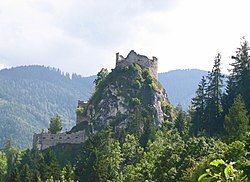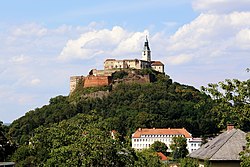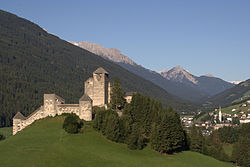You can help expand this article with text translated from the corresponding article in German. (July 2009)Click [show] for important translation instructions.
|
| Burgruine Eppenstein | |
|---|---|
| Eppenstein, Styria Austria | |
 | |
| Site information | |
| Type | Spur castle |
| Open to the public | Yes |
| Condition | Ruin |
 | |
| Site history | |
| Built | c. 1000 |
Burgruine Eppenstein is a ruined medieval castle overlooking Eppenstein in the Austrian state of Styria. It was built about 1000 AD as the ancestral seat of the Eppenstein dynasty, whose members served as Margraves of Styria and were enfeoffed with the Duchy of Carinthia in the 11th and 12th century.







